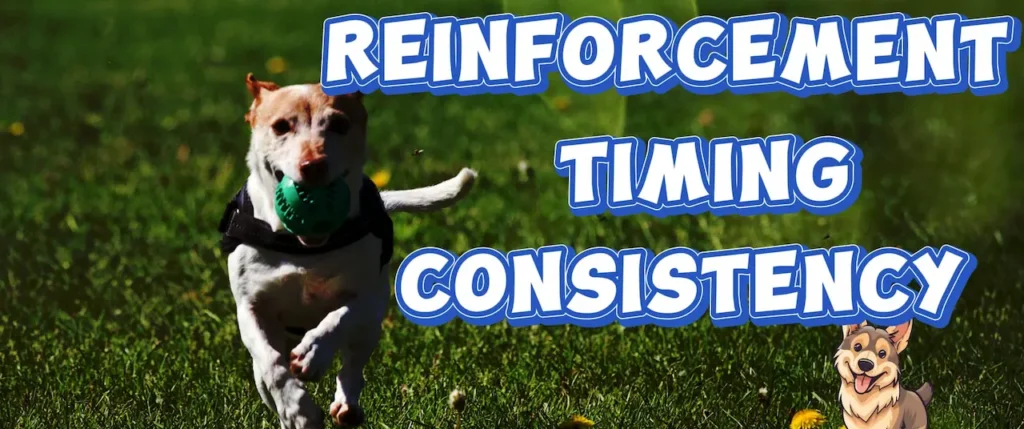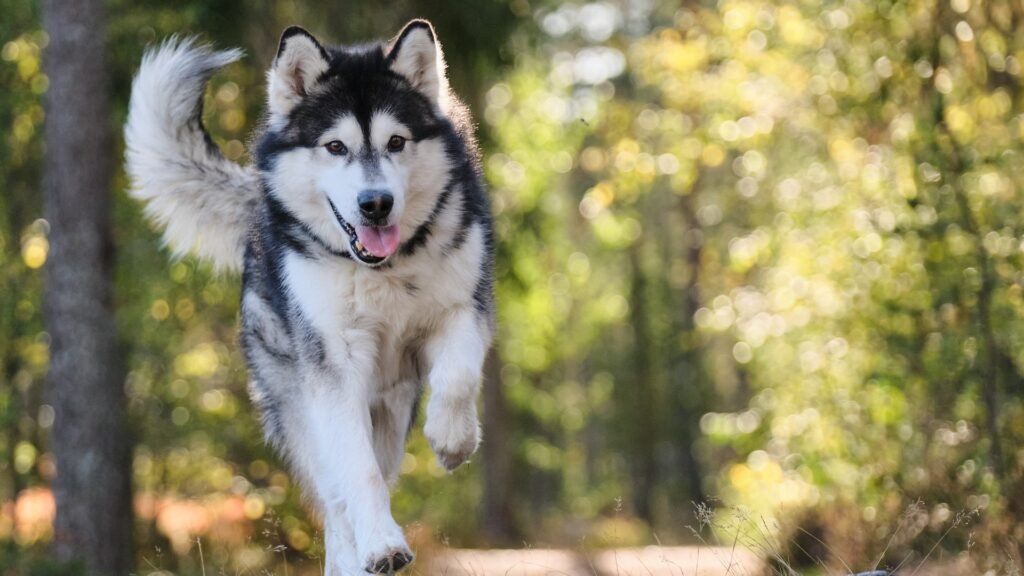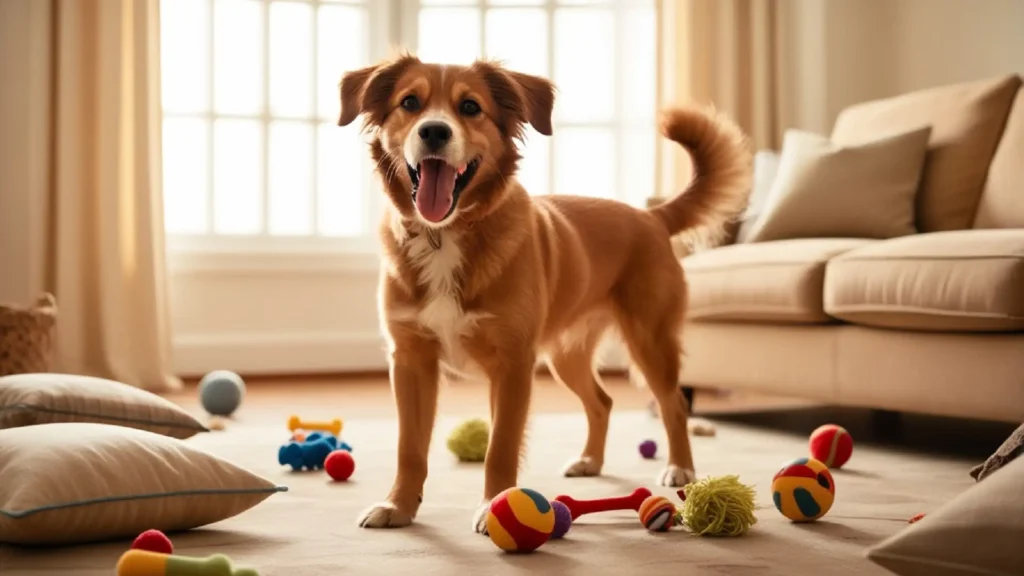Dogs are loyal and our good friend, but they give challenges through their behavior. That time you need to take some initiative for proper dog training. Understanding how to train and manage your dog’s behavior not only strengthens your bond but also ensures a harmonious relationship between pet and owner. You can change your dog’s unwanted behavior by the right training and proper behavior management by understanding the core principles of behavior psychology.
Why Training and Behavior Management for Dogs Matter
Training is more than teaching commands—it’s about fostering communication. Behavior management, on the other hand, addresses unwanted actions by modifying your dog’s environment or responses to situations. Together, these skills ensure your dog thrives in a human-centric world.
Proper dog training and behavior management are important for the reasons below-
- Improved communication
- Stronger bond
- Reduced stress and conflict
- Safety for everyone
- Enhanced quality of life
- Preventative approach
- Mental stimulation
- Socialization benefits
Dr. Karen Overall, a veterinary behaviorist, emphasizes that “consistent training methods rooted in positive reinforcement are critical for shaping well-adjusted dogs.” She suggests focusing on rewarding desired behaviors rather than punishing unwanted ones, which can lead to fear and anxiety.
Fundamentals of Dog Training

Positive Reinforcement – Give Positive Feedback
Reinforce your dog positively to change their behavior in a positive direction. Reinforcement with treats, toys, or praise brings positive change. This method encourages your dog to repeat the actions that lead to rewards. For instance, if your dog sits on command, immediately offer a treat and say, “Good sit!” It makes your dog happy and encourages her to follow your command.
According to behavioral psychology, this reinforces the connection between the action and the reward, creating a positive association with the behavior. Over time, your dog will learn that certain behaviors are beneficial, leading to quicker and more consistent learning.
According to Dr. Ian Dunbar, a renowned veterinarian and animal behaviorist, “Positive reinforcement is the most effective form of dog training because it encourages your dog to learn through enjoyable experiences. When a dog learns that good things happen after they perform a behavior, they are more likely to repeat it.”
This principle of rewarding desirable behavior rather than punishing undesirable behavior fosters a deeper bond between the dog and owner, as it avoids the stress associated with negative reinforcement.
Consistency is Key – Repeat the Commands
Create a routine to change your dog’s behavior. Dogs thrive on routine and repetition. Using the same commands, gestures, and rewards across all training sessions helps them learn faster and builds their confidence.
Consistency is key as it eliminates confusion, ensuring your dog understands what is expected. For instance, use “sit” instead of alternating with “sit down,” as using different commands for the same action may confuse your dog.
It’s also important to ensure that everyone in the household uses the same commands and training methods, as inconsistency can slow down progress and lead to mixed signals.
Professional dog trainer Karen Pryor emphasizes, “Consistency provides your dog with clear, unambiguous signals about what you expect. A dog that is consistently trained will feel more confident, knowing exactly how to behave in any situation.”
Consistency is not just about the commands you use, but also about your body language and tone of voice. The more consistent you are, the easier it will be for your dog to learn and retain commands.
Furthermore, consistency is not only about commands but also about maintaining a structured environment. Regular training sessions at the same time and place help your dog become accustomed to learning in specific conditions.
Over time, they will know what to expect and can focus more on learning rather than being distracted by a lack of structure.
Timing Matters – Give rewards instantly
If you deliver the reward after the positive behavioral change, your dog can understand that it’s a reward. So, delivering rewards or corrections immediately after a behavior is crucial for effective training. Dogs live in the moment, so delayed responses may confuse them about which action is being addressed.
For instance, if you wait too long to reward your dog for sitting, they may no longer associate the reward with the behavior you wanted to reinforce. Instead, the dog might think that the treat is for another action they just performed, like jumping or barking. Timely reinforcement ensures that your dog understands exactly what behavior is being encouraged and delayed timing confuses the dog.
According to dog behaviorist Victoria Stilwell, “Timing is crucial when training a dog. If you delay giving a reward or a correction, your dog may not connect it to the behavior you want to reinforce or discourage. Immediate feedback is essential to shaping behavior in a clear and understandable way.”
This is why many trainers recommend using clickers or verbal markers to provide a precise and immediate indication of correct behavior.
Similarly, when correcting unwanted behaviors, timing is just as important. If a correction is too delayed, your dog may not associate it with the behavior you want to stop, such as jumping on guests or barking excessively. Correcting behavior immediately, whether through a firm “no” or a time-out, helps the dog understand that specific actions are undesirable and should be avoided.
Common Behavioral Challenges and Solutions

Excessive Barking
Barking is a natural form of communication for dogs, but excessive barking isn’t appropriate, it can become a nuisance, especially when it happens frequently and inappropriately.
To address this, it’s important to first identify the triggers of the barking, such as strangers, other dogs, or boredom. Once the triggers are understood, you can work on desensitizing your dog to them or provide distractions to redirect their attention.
Victoria Stilwell advises, “Teaching the quiet command is a highly effective way to curb excessive barking. Begin by rewarding your dog with treats or praise when they stop barking, even briefly. This creates a positive reinforcement loop, where the dog learns that silence results in a reward.”
Excessive barking often stems from excessive anxiety or excitement of something. Your have to first understand the reasons behind the barking. It takes time, so you should keep patience and remain consistent to find out the proper solution.
Some dogs bark excessively when they hear the doorbell, and desensitization can be used to reduce this response. Start by playing recordings of doorbell sounds at a low volume and rewarding your dog for remaining quiet.
Gradually increase the volume as your dog learns to stay calm when they hear the sound. This can be paired with training the “quiet” command for more immediate control.
Chewing
Chewing is, especially beneficial for puppies, essential to relieve boredom, soothe teething, and keep teeth clean. However, when it can become destructive. Your dog may tear shoes apart, and destruct furniture, or household items—thus create frustration for both you and your dog.
One solution is to provide appropriate chew toys, advised by your vet, and engage in positive redirection when your dog begins chewing on forbidden items.
Dr. Sophia Yin, a veterinarian and animal behaviorist, stresses that, “Chewing is often a sign of unmet needs, such as mental stimulation or physical exercise. By providing appropriate alternatives like rubber toys or bones, and redirecting the behavior to those, you give your dog an outlet for their natural instincts.”
You can do it by introducing a number of durable chew toys and applying a deterrent spray to the shoes to make them less appealing. Every time your dog approached the shoes, you would redirect her to the chew toys, rewarding her when she chose the correct item.
Gradually, your dog’s chewing behavior would be redirected, and the destructive habit would be broken. Dr. Yin also recommends making chew toys more appealing by stuffing them with tasty treats, ensuring the dog stays engaged and satisfied.
Separation Anxiety
Separation anxiety isn’t common but many dogs experience it when left alone, that could lead the dog to destructive behavior, excessive barking, or attempts to escape.
Counter Conditioning is one of the effective methods for addressing separation anxiety, which helps your dog associate time with positive experiences, when you are out of home. For example, providing a special treat-filled toy when you leave the house can help your dog feel more comfortable in your absence.
Dr. Patricia McConnell, an applied animal behaviorist and author, suggests, “Start with short absences and gradually increase the duration as your dog becomes more comfortable. This slow process helps your dog build confidence that you will return and that their time alone is not to be feared.”
Dr. McConnell also recommends practicing “departure cues” (e.g., grabbing your keys or putting on your shoes) without actually leaving to help desensitize your dog to your pre-departure routine.
Start small at the beginning. Begin by leaving your dog alone for just a few minutes and gradually extend the time as they get used to the idea of being by themselves. Let the dog build confidence. Pair your absences with a high-value treat or puzzle toy that only appears when you leave.
This association helps to reduce the anxiety around your departure, as your dog will come to understand that being alone results in positive experiences.
Advanced Training Techniques

You can look for advanced training, if the above methods don’t work for you. You need activities like agility, scent work, or advanced obedience to channel your dog’s energy constructively along with providing excellent mental and physical stimulation.
The benefits are that these activities not only offer a way for dogs to burn off excess energy, but they also engage their brains, help them develop new skills, and create a deeper bond with their owners.
Advanced training techniques are helpful to prevent boredom-related behaviors by providing a purposeful outlet for your dog’s energy, which can result in fewer destructive tendencies and more positive behavior at home.
Agility Training
Renowned dog trainer and behaviorist, Susan Garrett, who specializes in dog agility, emphasizes, “Agility and other advanced training activities provide a mental challenge for dogs, which is just as important as physical exercise. When dogs are mentally stimulated, they are less likely to engage in undesirable behaviors because they are more focused and content.”
Training through agility courses, for example, requires dogs to think critically, follow commands, and work through challenges, which can enhance their problem-solving abilities and overall obedience.
Agility training is a form of exercise which involves teaching your dog to navigate various obstacles like jumps, tunnels, and weave poles. This helps to improve coordination and confidence in dogs.
Scent Work
Scent work, or nose work, teaches dogs to identify and locate specific scents, a skill that can be used for both fun and functional purposes, such as search and rescue or detection work. In addition to mental stimulation, scent work builds focus and patience in dogs, as they learn to follow clues and solve scent-based puzzles.
As they master new skills, dogs gain a sense of accomplishment, which boosts their self-esteem and strengthens the relationship with their owner.
Dr. Konrad Lorenz, a noted animal behaviorist, once said, “A dog’s natural instincts are often the key to creating effective training exercises. Engaging these instincts through scent work or agility taps into their natural skills and provides the mental challenge they crave.”
By incorporating activities like scent work into your training routine, you not only give your dog an enjoyable and rewarding task but also prevent the frustration that can arise from a lack of mental stimulation.
Advance Obedience Training
For dogs who are already well-versed in basic obedience, advanced obedience training can offer a structured way to further their skills. This may involve complex commands, off-leash training, or even tasks like retrieving specific items on command.
These advanced commands require your dog to focus intently and build a deeper understanding of cues, leading to a stronger working relationship with their handler.
Celebrity dog trainer and author, Cesar Millan, believes that, “Advanced training techniques like off-leash work or intricate obedience drills help solidify a dog’s trust and respect for its owner. They reinforce a dog’s natural desire to work alongside their human, which fosters a cooperative and fulfilling bond.”
Advanced obedience training also helps dogs develop better impulse control and increases their attentiveness to their handler’s commands, which is crucial for maintaining good behavior in a variety of settings.
The Role of Professional Help
If behavioral issues persist despite your best efforts, consulting a professional dog trainer or veterinary behaviorist can make a significant difference. Certified trainers use evidence-based techniques tailored to your dog’s unique personality and needs.
Final Thoughts
Training and behavior management are lifelong processes that require patience, understanding, and commitment. By applying consistent, positive methods, you’ll create a strong foundation for a happy, well-behaved dog. Remember, every dog learns at their own pace, so celebrate progress, no matter how small. With time and effort, you and your furry friend can enjoy a harmonious and fulfilling relationship.




